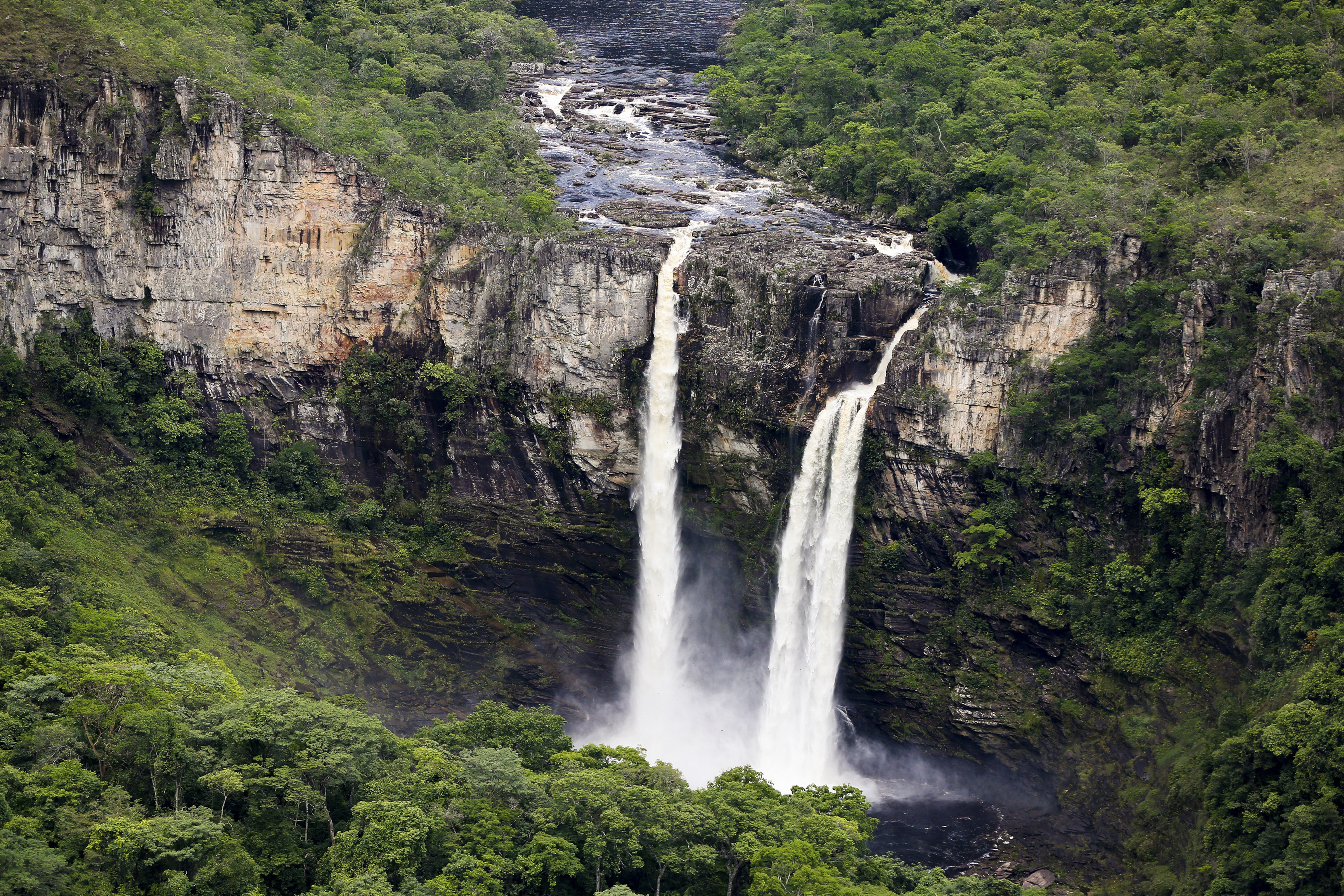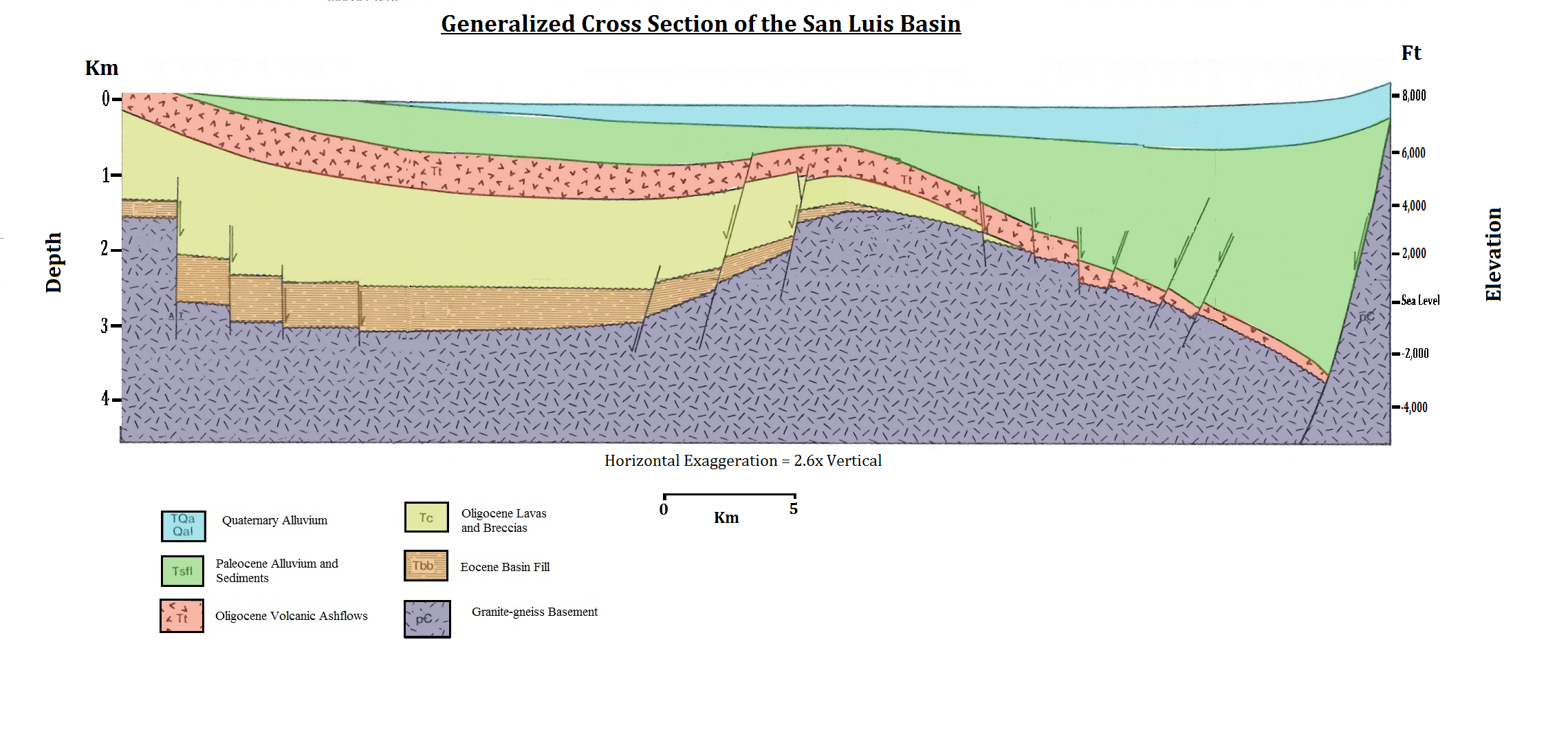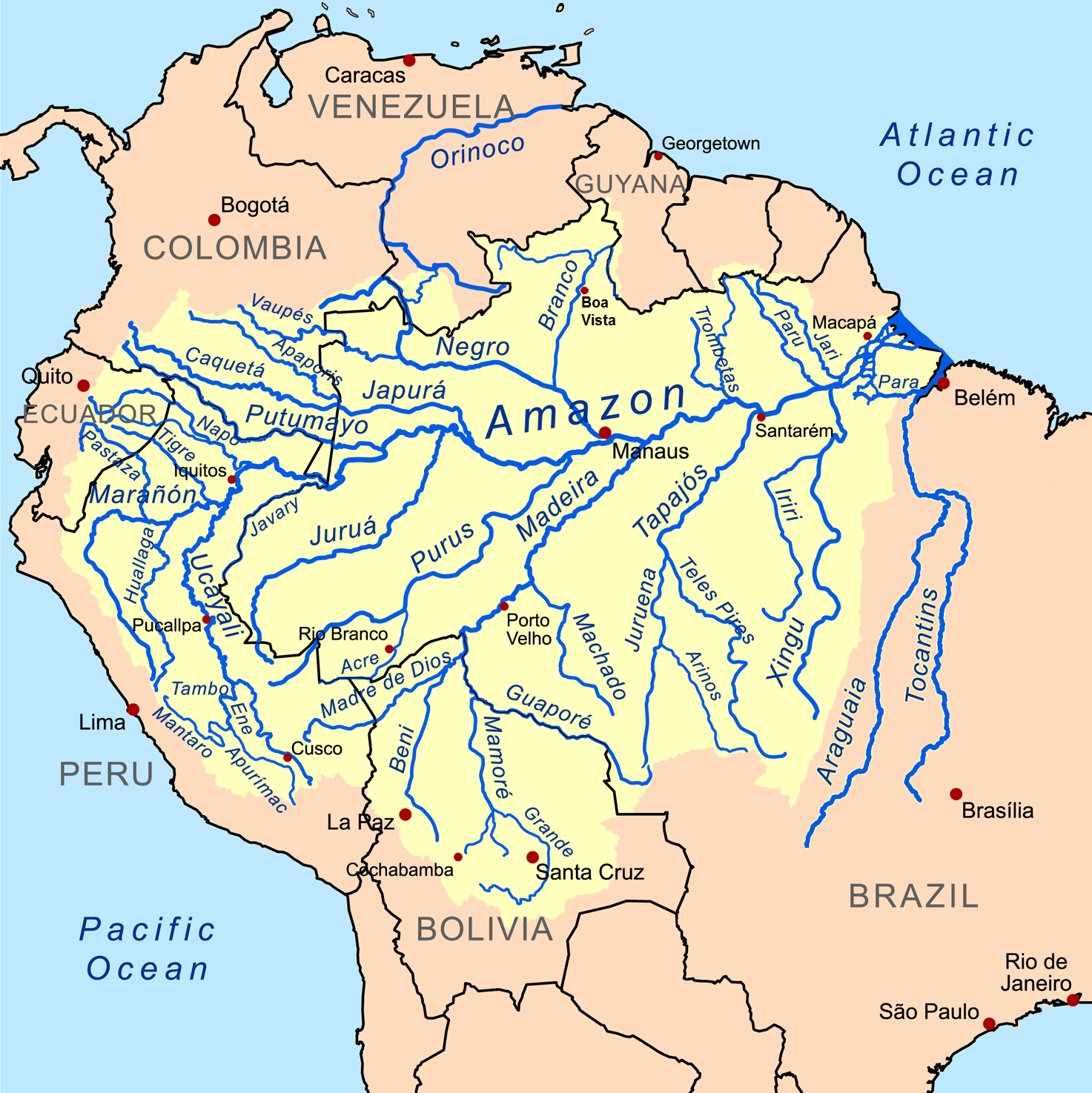|
Rio Curiaú Environmental Protection Area
The Rio Curiaú Environmental Protection Area () is an environmental protection area in the state of Amapá, Brazil. It attempts to protect the environment of a region of forest and flooded fields close to the state capital, Macapá, and also to preserve the values and culture of the traditional population, which is of African descent. It is threatened by urban expansion. Location The Rio Curiaú Environmental Protection Area (APA) is in the municipality of Macapá, Amapá, about from the city center, and has an area of . The Curiaú River, which gives its name to the APA, rises in the APA and flows southeast into the Amazon. The EAP-070 highway from Macapá runs through the APA from south to north. The APA is bounded to the east by the Amazon River, to the north by the Pescada stream and the road linking the EAP-070 highway to BR-210, to the west by the Amapá railroad, and to the south by an E-W line that divides it from the urban area of Macapá to the south. History One a ... [...More Info...] [...Related Items...] OR: [Wikipedia] [Google] [Baidu] [Amazon] |
Macapá
Macapá () is a city in Brazil with a population of 512,902 (2020 estimate), and is the capital of Amapá state in the country's North Region, Brazil, North Region, located on the northern channel of the Amazon Delta near its mouth on the Atlantic Ocean. The city is on a small plateau on the Amazon in the southeast of the state of Amapá. The only access by road from outside the province is from the Overseas France, overseas France, French Departments of France, department of French Guiana, although there are regular ferries to Belém, Brazil. Macapá is linked by road with some other cities in Amapá. The equator runs through the middle of the city, leading residents to refer to Macapá as "''The capital of the middle of the world.''" It covers and is located northwest of the large inland island of Marajó and south of the border with French Guiana. History Macapá is a corruption of the Tupian languages, Tupi word ''macapaba'', or "''place of many bacabas''", the fruit of the ... [...More Info...] [...Related Items...] OR: [Wikipedia] [Google] [Baidu] [Amazon] |
Cerrado
The Cerrado () is a vast ecoregion of Tropics, tropical savanna in central Brazil, being present in the states of Goiás, Mato Grosso do Sul, Mato Grosso, Tocantins, Maranhão, Piauí, Bahia, Minas Gerais, São Paulo (state), São Paulo, Paraná (state), Paraná and the Federal District (Brazil), Federal District. The core areas of the Cerrado biome are the Brazilian highlands – the ''Planalto''. The main habitat types of the Cerrado consist of forest savanna, wooded savanna, park savanna and grass, gramineous-woody savanna. The Cerrado also includes savanna wetlands and gallery forests. The second largest of Biomes in Brazil, Brazil's major habitat types, after the Amazon rainforest, Amazonian rainforest, the Cerrado accounts for a full 21 percent of the country's land area (extending marginally into Paraguay and Bolivia). About 75% of the Cerrado’s 2 million km2 is privately owned. Vast amounts of research have shown that the Cerrado is one of the richest of all tropi ... [...More Info...] [...Related Items...] OR: [Wikipedia] [Google] [Baidu] [Amazon] |
Protected Areas Of Amapá
Protection is any measure taken to guard something against damage caused by outside forces. Protection can be provided to physical objects, including organisms, to systems, and to intangible things like civil and political rights. Although the mechanisms for providing protection vary widely, the basic meaning of the term remains the same. This is illustrated by an explanation found in a manual on electrical wiring: Some kind of protection is a characteristic of all life, as living things have evolved at least some protective mechanisms to counter damaging environmental phenomena, such as ultraviolet light. Biological membranes such as bark on trees and skin on animals offer protection from various threats, with skin playing a key role in protecting organisms against pathogens and excessive water loss. Additional structures like scales and hair offer further protection from the elements and from predators, with some animals having features such as spines or camouflage ser ... [...More Info...] [...Related Items...] OR: [Wikipedia] [Google] [Baidu] [Amazon] |
Environmental Protection Areas Of Brazil
Environment most often refers to: __NOTOC__ * Natural environment, referring respectively to all living and non-living things occurring naturally and the physical and biological factors along with their chemical interactions that affect an organism or a group of organisms Other physical and cultural environments *Ecology, the branch of ethology that deals with the relations of organisms to one another and to their physical surroundings *Environment (systems), the surroundings of a physical system that may interact with the system by exchanging mass, energy, or other properties. *Built environment, constructed surroundings that provide the settings for human activity, ranging from the large-scale civic surroundings to the personal places *Social environment, the culture that an individual lives in, and the people and institutions with whom they interact *Market environment, business term Arts, entertainment and publishing * ''Environment'' (magazine), a peer-reviewed, popular e ... [...More Info...] [...Related Items...] OR: [Wikipedia] [Google] [Baidu] [Amazon] |
Várzea Forest
A várzea forest is a seasonal floodplain forest inundated by whitewater rivers that occurs in the Amazon biome. Until the late 1970s, the definition was less clear and várzea was often used for all periodically flooded Amazonian forests. Although sometimes described as consisting only of forest, várzea also contains more open, seasonally flooded habitats such as grasslands, including floating meadows. Description Along the Amazon River and many of its tributaries, high annual rainfall that occurs mostly within a rainy season results in extensive seasonal flooding of areas from stream and river discharge. The result is a rise in water level, with nutrient rich waters. The Iquitos várzea ecoregion covers the margins of the upper Amazon and its tributaries. Further down are the Purus várzea in the middle Amazon, the Monte Alegre várzea and Gurupa várzea on the lower Amazon and the Marajó várzea at the mouth of the Amazon. The Marajó várzea is affected by both freshw ... [...More Info...] [...Related Items...] OR: [Wikipedia] [Google] [Baidu] [Amazon] |
Alluvial
Alluvium (, ) is loose clay, silt, sand, or gravel that has been deposited by running water in a stream bed, on a floodplain, in an alluvial fan or beach, or in similar settings. Alluvium is also sometimes called alluvial deposit. Alluvium is typically geologically young and is not consolidated into solid rock. Sediments deposited underwater, in seas, estuaries, lakes, or ponds, are not described as alluvium. Floodplain alluvium can be highly fertile, and supported some of the earliest human civilizations. Definitions The present consensus is that "alluvium" refers to loose sediments of all types deposited by running water in floodplains or in alluvial fans or related landforms. However, the meaning of the term has varied considerably since it was first defined in the French dictionary of Antoine Furetière, posthumously published in 1690. Drawing upon concepts from Roman law, Furetière defined '' alluvion'' (the French term for alluvium) as new land formed by deposition ... [...More Info...] [...Related Items...] OR: [Wikipedia] [Google] [Baidu] [Amazon] |
Gleysol
A gleysol or gley soil is a hydric soil that unless drained is saturated with groundwater for long enough to develop a characteristic colour pattern. The pattern is essentially made up of reddish, brownish, or yellowish colours at surfaces of soil particles and/or in the upper soil horizons mixed with greyish/blueish colours inside the peds and/or deeper in the soil. Gleysols are also known as ''Gleyzems'', ''meadow soils'', ''Aqu''-suborders of Entisols, Inceptisols and Mollisols (USDA soil taxonomy), or as ''groundwater soils'' and ''hydro-morphic soils''. The term gley, or glei, is derived from , and was introduced into scientific terminology in 1905 by the Ukrainian scientist Georgy Vysotsky. Gleysols occur within a wide range of unconsolidated materials, mainly fluvial, marine and lacustrine sediments of Pleistocene or Holocene age, having basic to acidic mineralogy. They are found in depression areas and low landscape positions with shallow groundwater. Wetness is t ... [...More Info...] [...Related Items...] OR: [Wikipedia] [Google] [Baidu] [Amazon] |
Oxisol
Oxisols are a soil order in USDA soil taxonomy, best known for their occurrence in tropical rain forest within 25 degrees north and south of the Equator. In the World Reference Base for Soil Resources (WRB), they belong mainly to the ferralsols, but some are plinthosols or nitisols. Some oxisols have been previously classified as laterite soils. Formation The main processes of soil formation of oxisols are weathering, humification and pedoturbation due to animals. These processes produce the characteristic soil profile. They are defined as soils containing ''at all depths'' no more than ten percent weatherable minerals, and low cation exchange capacity. Oxisols are always a red or yellowish color, due to the high concentration of iron(III) and aluminium oxides and hydroxides. They also contain quartz and kaolin, plus small amounts of other clay minerals and organic matter. Etymology The word "oxisol" comes from ''"oxide"'' in reference to the dominance of oxide mineral ... [...More Info...] [...Related Items...] OR: [Wikipedia] [Google] [Baidu] [Amazon] |
Várzea Forest
A várzea forest is a seasonal floodplain forest inundated by whitewater rivers that occurs in the Amazon biome. Until the late 1970s, the definition was less clear and várzea was often used for all periodically flooded Amazonian forests. Although sometimes described as consisting only of forest, várzea also contains more open, seasonally flooded habitats such as grasslands, including floating meadows. Description Along the Amazon River and many of its tributaries, high annual rainfall that occurs mostly within a rainy season results in extensive seasonal flooding of areas from stream and river discharge. The result is a rise in water level, with nutrient rich waters. The Iquitos várzea ecoregion covers the margins of the upper Amazon and its tributaries. Further down are the Purus várzea in the middle Amazon, the Monte Alegre várzea and Gurupa várzea on the lower Amazon and the Marajó várzea at the mouth of the Amazon. The Marajó várzea is affected by both freshw ... [...More Info...] [...Related Items...] OR: [Wikipedia] [Google] [Baidu] [Amazon] |
Köppen Climate Classification
The Köppen climate classification divides Earth climates into five main climate groups, with each group being divided based on patterns of seasonal precipitation and temperature. The five main groups are ''A'' (tropical), ''B'' (arid), ''C'' (temperate), ''D'' (continental), and ''E'' (polar). Each group and subgroup is represented by a letter. All climates are assigned a main group (the first letter). All climates except for those in the ''E'' group are assigned a seasonal precipitation subgroup (the second letter). For example, ''Af'' indicates a tropical rainforest climate. The system assigns a temperature subgroup for all groups other than those in the ''A'' group, indicated by the third letter for climates in ''B'', ''C'', ''D'', and the second letter for climates in ''E''. Other examples include: ''Cfb'' indicating an oceanic climate with warm summers as indicated by the ending ''b.'', while ''Dwb'' indicates a semi-Monsoon continental climate, monsoonal continental climate ... [...More Info...] [...Related Items...] OR: [Wikipedia] [Google] [Baidu] [Amazon] |
Amapá Biodiversity Corridor
The Amapá Biodiversity Corridor () is an ecological corridor in the state of Amapá, Brazil. It provides a degree of integrated management for conservation units and other areas covering over 70% of the state. Organization The project to establish the Amapá Biodiversity Corridor was presented by Antônio Waldez Góes da Silva, governor of Amapá, at the 2003 Durban World Conference of Protected Areas. The proposed corridor would include marshland, tropical forest and open spaces of importance in maintaining global biodiversity. The acts that would lead to conservation measures in the corridor were signed in 2005. The corridor covers more than 70% of the state, and should allow for coordinated management of conservation units and indigenous territories in the state in line with the principles laid out in the Rio Convention on Biodiversity. The corridor and the conservation units it contains will be co-funded by the Amapá Fund. The Amapá Initiative is run by a partnership of ... [...More Info...] [...Related Items...] OR: [Wikipedia] [Google] [Baidu] [Amazon] |






